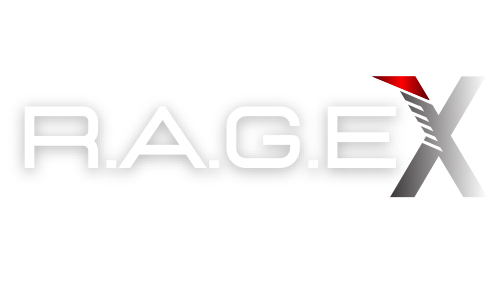Date: March 9, 2024
News Category: Military Analysis
Country: United States
Location: Nellis Air Force Base, Nevada
The F-35A Lightning II has officially crossed a significant milestone by completing the certification process to carry the B61-12, a tactical gravity nuclear bomb. This certification not only enhances the U.S. Air Force’s (USAF) operational capabilities but also significantly alters the strategic balance, presenting new challenges for adversaries in terms of defensive planning. The integration of the F-35A with B61-12 bombs marks the first instance of a fifth-generation fighter aircraft being equipped for nuclear delivery, underscoring the advanced stealth and precision strike capabilities now at the disposal of the USAF.

Global Conflicts and Military Analysis:
- The Certification Process: In a remarkable display of technological prowess, the USAF completed the final test for the B61-12 nuclear bomb certification on the F-35A Lightning II, marking a historic achievement. During the test, two F-35As successfully dropped B61-12 Joint Test Assemblies, simulating the operational delivery of tactical nuclear weapons.
- Strategic Implications: This certification significantly enhances the USAF’s deterrence capabilities, providing a stealth platform capable of penetrating enemy defenses to deliver tactical nuclear strikes. The F-35A’s unique combination of stealth, agility, and sensor fusion makes it an invaluable asset in projecting nuclear deterrence, complicating adversaries’ defensive strategies.
- Technical Enhancements and Safety Measures: The certification required specific modifications to the F-35A, including the addition of a nuclear consent switch and a mission select switch, ensuring stringent safety and operational protocols for nuclear weapon deployment.

The red tail of an inert B61-12 is visible inside the bomb bay of this F-35A during a flight test. U.S. Department of Defense
The F-35A Joint Strike Fighter has achieved a significant milestone by being officially certified to carry the B61-12 thermonuclear gravity bomb, marking it as the first fifth-generation aircraft, and notably the first new platform since the early 1990s, to attain such capability. This operational certification aligns with a commitment to NATO, underscoring the stealth fighter’s enhanced role as a “dual-capable” platform for both conventional and nuclear missions. This accomplishment follows over a decade of intensive collaboration across 16 different government and industry stakeholders, fulfilling US and NATO’s extended deterrence commitments ahead of the initially projected schedule.

Notably, the F-35A’s certification to carry the B61-12 does not extend to its sister variants, the F-35B and F-35C, indicating a specific operational enhancement for the Air Force’s variant of the Joint Strike Fighter. This development is part of the broader strategic effort to update and maintain a credible nuclear deterrent, especially given the current geopolitical tensions with Russia and the ongoing conflict in Ukraine. The B61-12 itself is part of a life extension program that aims to consolidate and replace older versions of the bomb, ensuring the sustainability and effectiveness of the nuclear arsenal. This program, initiated during the Obama administration, is expected to continue through fiscal 2025, reflecting a significant investment in maintaining a modern and secure nuclear deterrent.
All F-35As in the Air Force inventory are expected to eventually be configured for nuclear certification, regardless of their production lot. This broad certification indicates a strategic shift towards enhancing the nuclear capabilities across the entire F-35A fleet, although operational details remain classified. The F-35’s capability to carry the B61-12 without needing the suite of upgrades known as Block 4 emphasizes the fighter’s inherent design flexibility and advanced capability.

A map of current and former locations where B61 bombs are located in Europe under the NATO nuclear weapon sharing arrangements and a table breaking down estimated total bombs at each current site as of 2022. FAS
The certification of the F-35A for the B61-12 thermonuclear bomb represents a pivotal enhancement in nuclear deterrence capabilities, contributing significantly to NATO’s security posture against potential adversaries. This step is part of a comprehensive nuclear modernization effort that includes the development of new variants like the B61-13, aimed at further ensuring the strategic efficacy of the United States’ nuclear arsenal in safeguarding national and allied security interests in a rapidly evolving global security environment.

An inert B61-12 nuclear bomb. Sandia National Laboratories
Historical Insight:
- Evolution of Tactical Nuclear Weapons: The B61-12 represents the latest advancement in the B61 family of nuclear bombs, featuring improved accuracy and reduced collateral damage. Its integration into the F-35A underscores the evolving nature of nuclear deterrence, with precision and stealth now key elements of strategic planning.
The certification of the F-35A to carry B61-12 nuclear bombs is a pivotal moment in modern military strategy, significantly enhancing the U.S. Air Force’s tactical and strategic capabilities. This development not only affirms the F-35A’s role as a premier stealth fighter but also redefines the contours of nuclear deterrence, offering the U.S. a more flexible and stealthy means of projecting nuclear power. As the USAF moves forward with operational certification, the F-35A is set to become a cornerstone of U.S. military power, ready to safeguard national security in an increasingly complex global environment.










